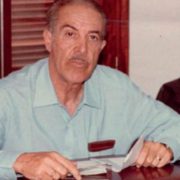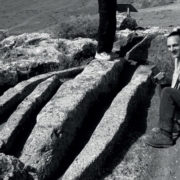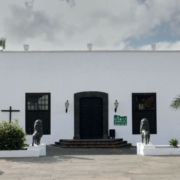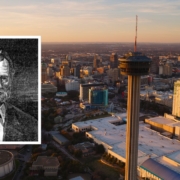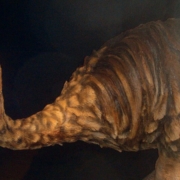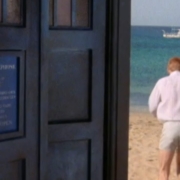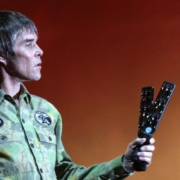In 1960, José Ramírez Cerdá, known to all as “Pepín” was elected as President of the Cabildo of Lanzarote. He would leave that post in 1974, having transformed the island in a way that seems scarcely believable.
Ramírez was born in 1919 just ten days before César Manrique. The two men were schoolfriends, served together in the army and remained close throughout their lives.
In 1955 he was elected as Mayor of Arrecife, and five years later, elected as the President of the Cabildo. At that time, Spain was gradually becoming aware of the potential of tourism, and Puerto de la Cruz in Tenerife had lit a beacon as the first Canarian tourist resort. But Lanzarote – a dry, desolate island with little fresh water – appeared to offer little to the tourist.
That changed in 1963, when the electrician Jesús Soto was commissioned to light the Cueva de los Verdes for a visit by archaeologists. When the visit took place, officials were expecting little more than a string of light bulbs, but Soto had created an incredible display, accompanied by the sound of Vivaldi’s “Spring” on tape recorder.
Ramírez immediately saw the potential, and the vision of Lanzarote’s tourist centres was born. They would require funding and official support, but they would also need creative input, and so Ramírez offered his old friend César Manrique the opportunity of a lifetime.
Manrique returned to his native island in 1966 and with Ramírez’s full support, he, Soto and a skilled creative team created Los Jameos del Agua, the Monumento al Campesino, the El Diablo restaurant and the Ruta de los Volcanes at Timanfaya, the Mirador del Río and the international Museum of Contemporary Art in Arrecife. Journalist Saúl García has said that “if Manrique was the director, Ramírez was the producer.”
Ramírez’s term as President also saw the acquisition of the desalination plant and the construction of the first major hotels on Lanzarote. Apart from this, he created the current barrios of Valterra and Titerroy in Arrecife, established several schools, renovated the island’s hospital, created the pedestrian walkway around the Charco de San Ginés and oversaw a huge renovation of the island’s road network. One of his final achievements was the declaration of Timanfaya as one of Spain’s National Parks.
Pepín Ramírez died in 1987, after serving the island as a Socialist senator, leaving behind a Lanzarote that he had transformed utterly from a relatively poor, ignored island to a prosperous tourist destination with fresh running water, modern infrastructure and an incomparable creative vision unmatched anywhere else in Europe.

